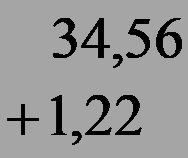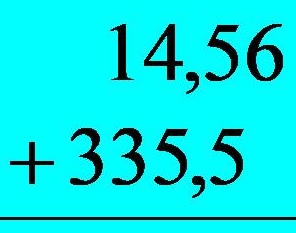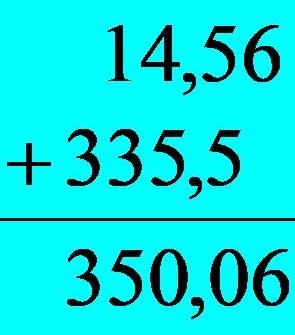This page is intended to help all readers who want to know how to add decimal numbers. Adding decimal numbers is a very easy mathematical operation, similar to adding natural numbers, but many more mistakes are made with this operation. Of course, for someone to collect decimal numbers well, he needs to know the place value of decimal numbers well.
Logically, because a decimal number has a place value, identical to any natural number, but besides them, the place value of the decimal places of the decimal number should also differ. That is why this operation with decimal numbers is considered more difficult than adding natural numbers.
Addition Of Decimals
When adding decimal numbers, an error occurs if we mix up the place values of the different digits. To never make a mistake, we prefer to use a staggered way of adding, where we line up the decimal numbers one below the other, making sure that their decimal points line up one below the other, whether it’s two or more decimal numbers.

It is clear from the picture that if we complete math calculation in this way we will make a huge mistake because the two decimal points of the two decimal numbers are not below each other. In this way, we will add the ones of the first decimal number to the tenths of the second decimal number.
Let’s now solve an example properly. See the example below:
Example 1: Add the decimal numbers:

From the image above, it is clear that the decimal numbers 14.56 and 335.5 are in a good position on top of each other. Their decimal points are one above the other. Here, if we start calculating in this way, observing the general rules of addition, we will surely get the correct result! So let’s begin:
Example On How To Add Decimal Numbers
- At the place of the second decimal, i.e. place of hundredths, only the first (number above) number has the digit 6, while the second (number below) decimal number does not have a digit in that position at all. That’s why when adding the hundredth place, we just write 6.
- In the place of the first decimal, i.e. tenth, the first decimal number has the digit 5. In the same place as the local value, the second decimal number also contains the digit 5. Therefore, in the place of tenths, we add 5+5=10. That’s why we write 0 in the result, and we remember (transfer) 1 and calculate it in the next place in the result.
- We switch to the place of ones. Here, the first decimal number has the value 4, and the second has the value 5. In this part, we calculate 4+5 +1 that we remember from before and we get 10, which means we write 0 again, and we move 1 forward.
- In the tens place, the first number contains 1, and the second 3. We add 1+3+1 that we remember, and as a result, we get the number 5.
- Finally, in the hundreds place, the first number does not contain a digit, and the second one contains a 3. Therefore, we just write 3 in the place of this place value of the decimal number.
The picture below shows you what a completely correct solution to the problem from example number one should look like!

Video examples
Below on the page, you can watch a video that contains many examples that explain how to add decimal numbers. The video is unique and made specifically to motivate you while watching it to learn all the different situations that came up when adding decimals!
Feel free to comment using the contact form below if you want to ask anything further or want to initiate a change regarding our work. Thank you!





